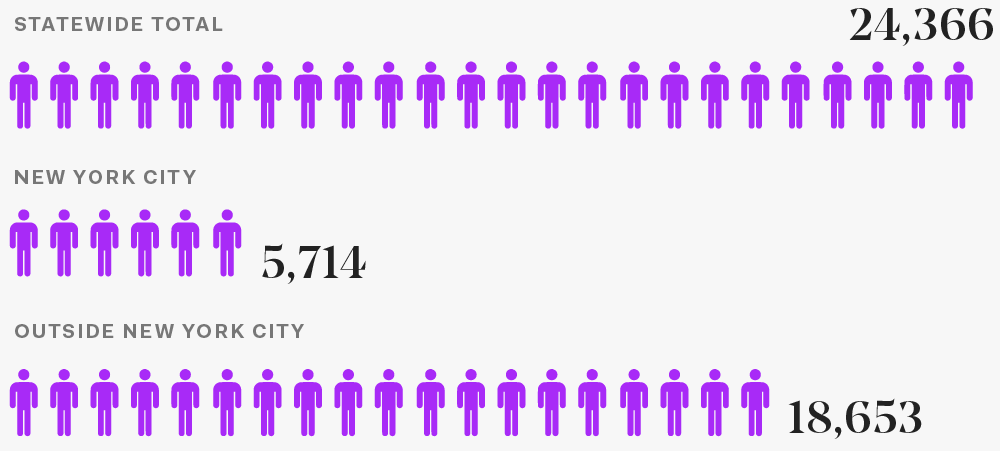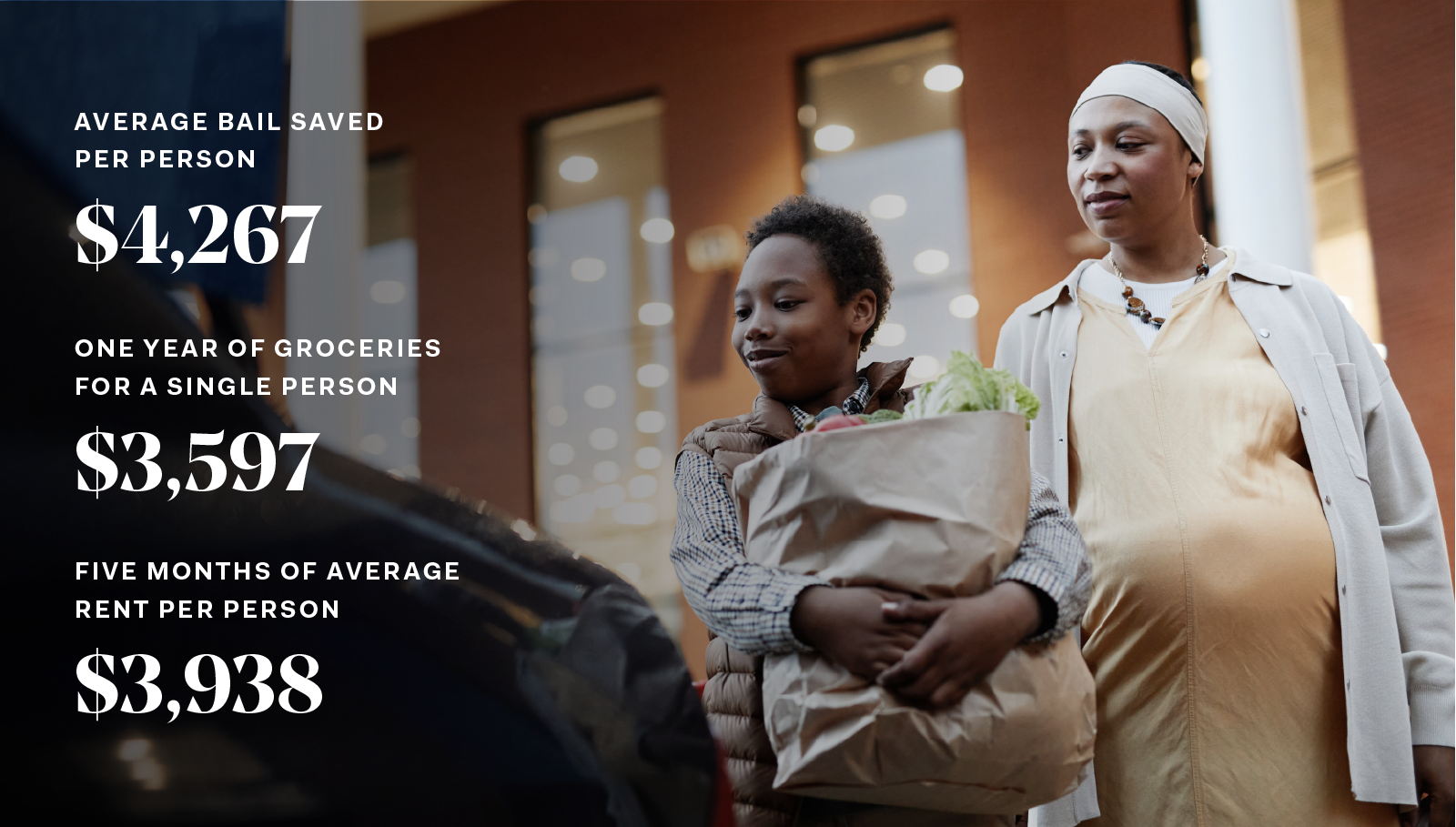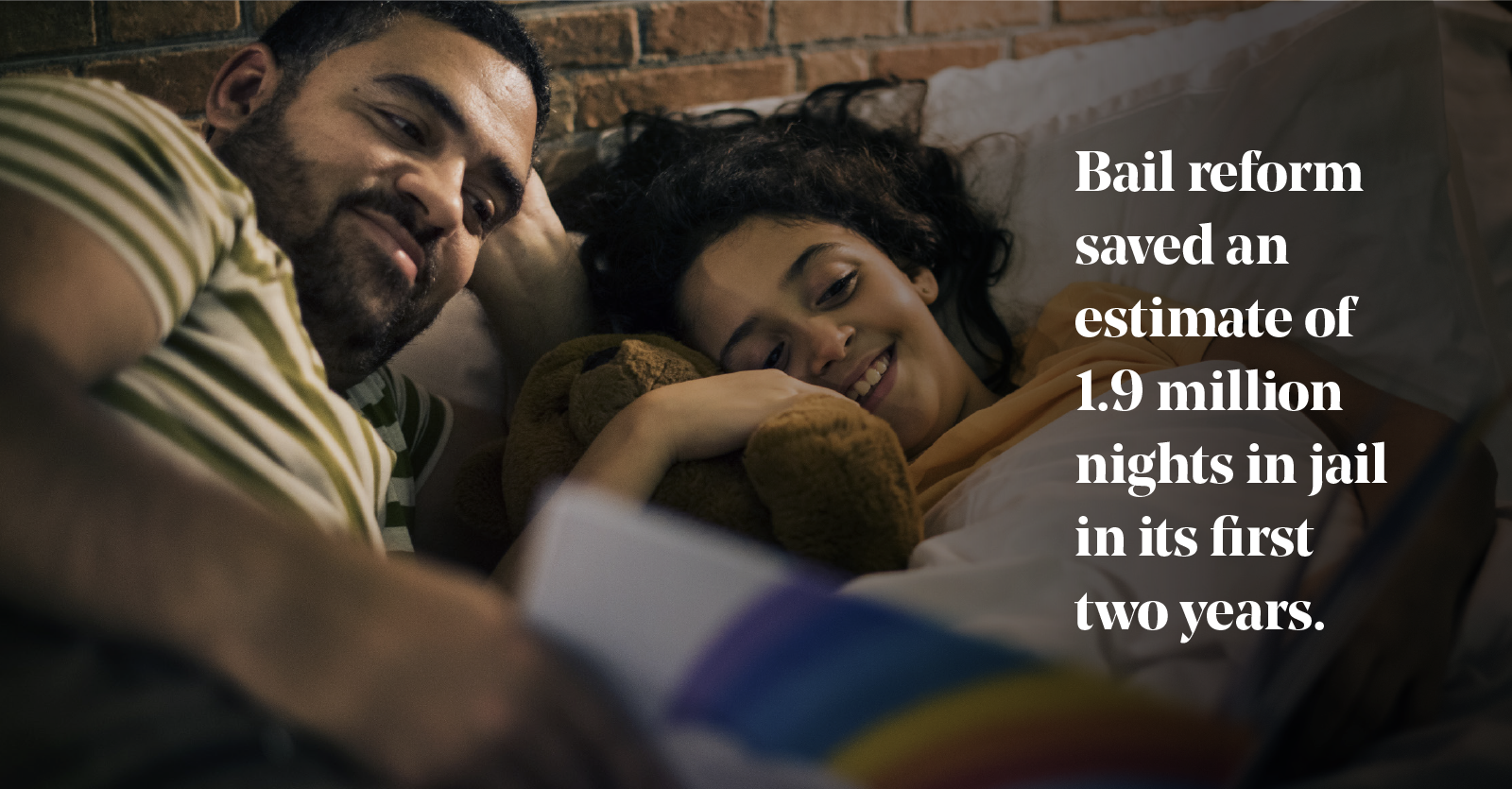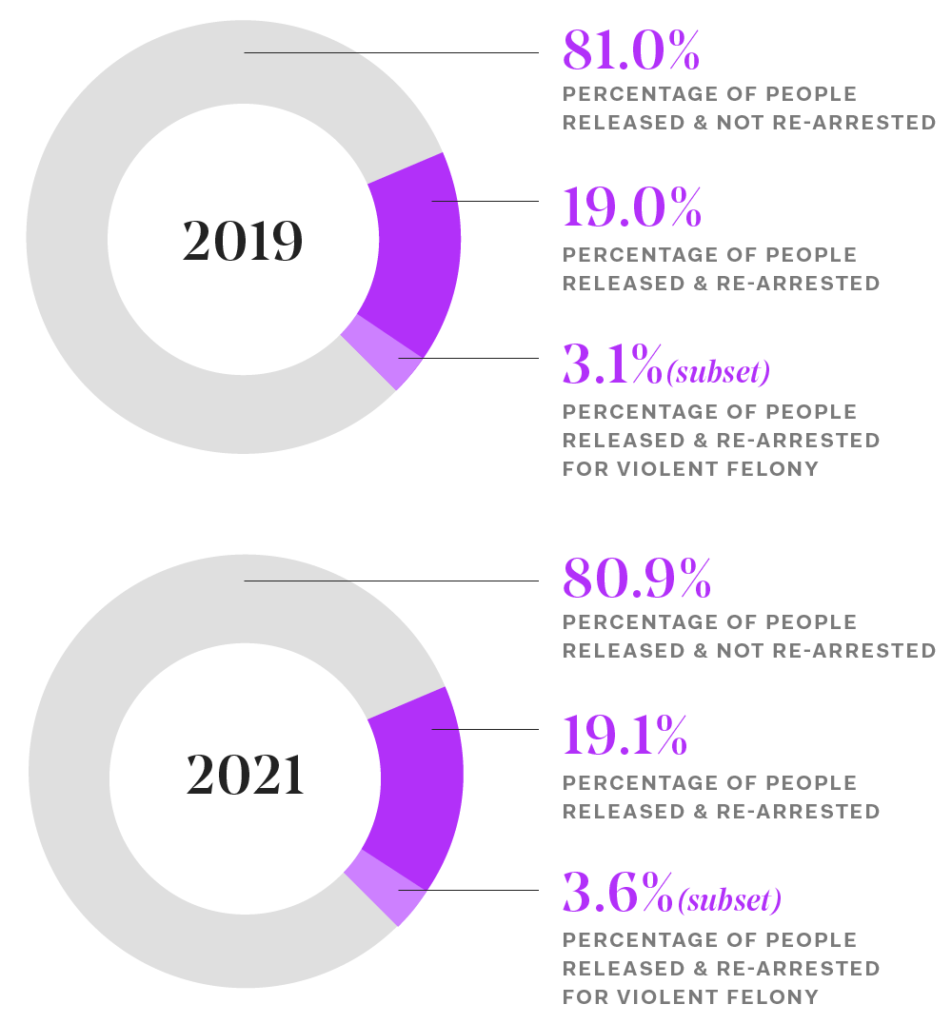In April 2019, New York passed a historic bail reform law that removed the threat of cash bail for most people charged with misdemeanors and nonviolent felonies across the state, allowing them to remain in the community while awaiting resolution of their cases rather than face pretrial detention. Despite suffering as a political punching bag, the law itself has been an astounding policy success. Not only have the 2019 bail reforms not driven any uptick in crime or failures to appear for court, the reforms also made an extraordinary and positive impact on the lives of the poor and working class New Yorkers who have historically been most harmed by cash bail and pretrial detention. That impact is measured in this report in the form of dollars saved by families, nights spent at home, and an overall shrinking of a jail system that loomed far too large in the lives of the very same New Yorkers who were already most disadvantaged and marginalized.
In the two years following enactment:
– 24,000 fewer people had bail set on their cases.
– $104 million less was set in bail that could have otherwise been leveraged or lost by New York's poor and working class families.
– 1.9 million nights that would have otherwise been spent in jail were spent at home.
– The pretrial population in New York jails decreased by 15% to its lowest levels in decades.
Using data released by DCJS and OCA in September 2021, FWD.us identified the cases in which people were charged with offenses that became ineligible for cash bail and pretrial detention as part of bail reforms that went into effect in January 2020 and were amended in July 2020. By isolating the categories of cases that were directly impacted by the legislative changes, FWD.us was able to conduct an apples-to-apples comparison of pretrial outcomes pre- and post-bail reform.





